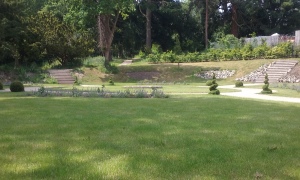At the weekend the local zoo organised a Wildlife Connections festival. This event was all about connecting people with nature and celebrating Britain’s wonderful wildlife; as well as show what incredible wildlife can be found right on your doorstep.
I love the Wildlife Connection project as it is all about creating connections from one wildlife friendly area to the next so that wildlife highways can be created in our neighbourhood, helping to protect our beautiful and precious wildlife.
I had lots of wildlife gardening to do first but after lunch I decided to take a walk down and have a look what was going on at the event. There was so many people enjoying the festival and kids were running around excitedly learning about the local wildlife in the nature reserve. There were demonstrations on creating bee friendly gardens, making seed bombs; as well as the opportunities to build bird feeders, bug homes and toad abodes. There were local conservation and community organisations at the event too and it was really interesting to talk to them and find out about recording local wildlife etc.. There was also a nature based obstacle course, music and a solar powered cinema too.

After picking up some wildlife leaflets, (and even got some in Welsh) I walked around the nature reserve that the zoo created a few years ago. This 2 acre site has been created with wildflowers, native trees, a wildlife pond and a grass area. Its lovely to see how its evolved already since it first opened.

There was lots of activities happening within the nature reserve. Children sat on the grass listening to magical stories inspired by nature. There was pond-dipping, bug hunts and bird spotting. I saw a drone’s eye view of the landscape and found out how drones are used to support conservation work and I watched the bees buzzing about the wildflowers.

I am very blessed to have many green spaces, beautiful countryside, parks and nature reserves near where I live and I look forward to seeing how this new nature reserve evolves and ages with time. It will be a nice place to sit and spot the wildlife that comes to visit here. It will be a nice place to stroll around looking for signs of animal tracks or just watching the bees buzzing amongst the wildflowers.

It was brilliant to see so many people at the event and I look forward to hopefully seeing more local wildlife events at the nature reserve like camera trapping and surveys etc..and it would be nice to maybe see a bug hotel, hedgehog home or bat box up maybe.
The more people that become aware of their local wildlife the more people will hopefully start to care and make a difference in their community; inspiring more people to take action for native British species. Its easy to do a bit for nature where you live like, putting a CD size hole in your fence to help a hedgehog, planting wildflowers to help the bees, create a compost heap, a log pile or put a dish of water and food out for the birds. Every bit helps 🙂



 Spurred on by my new find and the ruined castle before me, I walked up to the top of the hillfort with a spring in my step.
Spurred on by my new find and the ruined castle before me, I walked up to the top of the hillfort with a spring in my step.






